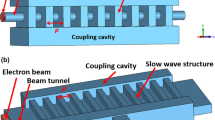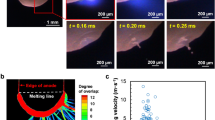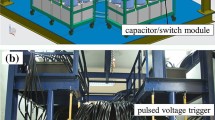Abstract
ABOUT a year and a half ago, our attention was directed to the relative instability of the condensed spark sources generally in use for quantitative spectrographic analysis. Consequently, work was carried out with the object of stabilizing the electrical excitation conditions in the analytical gap. The investigation led us to consider two general types of excitation circuits, namely, the high-voltage high-power circuit and the low-voltage controlled A.C. arc. In both these circuits the discharge is initiated by means of a synchronized trigger-circuit employing enclosed auxiliary spark gaps of the 'Trigatron' type (a three-electrode gap enclosed in a high-pressure argon–oxygen mixture).
This is a preview of subscription content, access via your institution
Access options
Subscribe to this journal
Receive 51 print issues and online access
$199.00 per year
only $3.90 per issue
Buy this article
- Purchase on Springer Link
- Instant access to full article PDF
Prices may be subject to local taxes which are calculated during checkout
Similar content being viewed by others
References
Kaiser, H., and Walraff, A., Ann. Phys., 34, 826 (1939).
Simpson, S. F., J. Opt. Soc. Amer., 35, 46 (1945).
Fowler, R. G., and Wolfe, R. A., J. Opt. Soc. Amer., 35, 170 (1945).
Author information
Authors and Affiliations
Rights and permissions
About this article
Cite this article
BRAUDO, C., CLAYTON., H. A New Spectrographic Spark Source. Nature 157, 622–623 (1946). https://doi.org/10.1038/157622c0
Issue Date:
DOI: https://doi.org/10.1038/157622c0
This article is cited by
-
Untersuchungen über Lichtquellen für Spektralanalyse
Acta Physica Academiae Scientiarum Hungaricae (1954)
-
Observation of Spectral Lines with Electron Multiplier Tubes
Nature (1946)
Comments
By submitting a comment you agree to abide by our Terms and Community Guidelines. If you find something abusive or that does not comply with our terms or guidelines please flag it as inappropriate.



